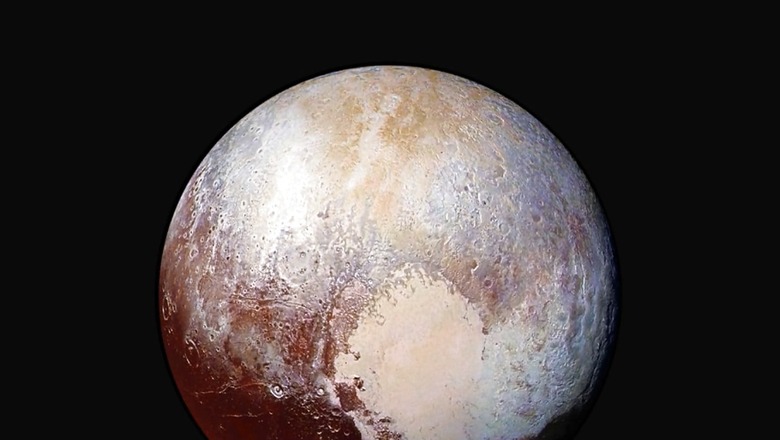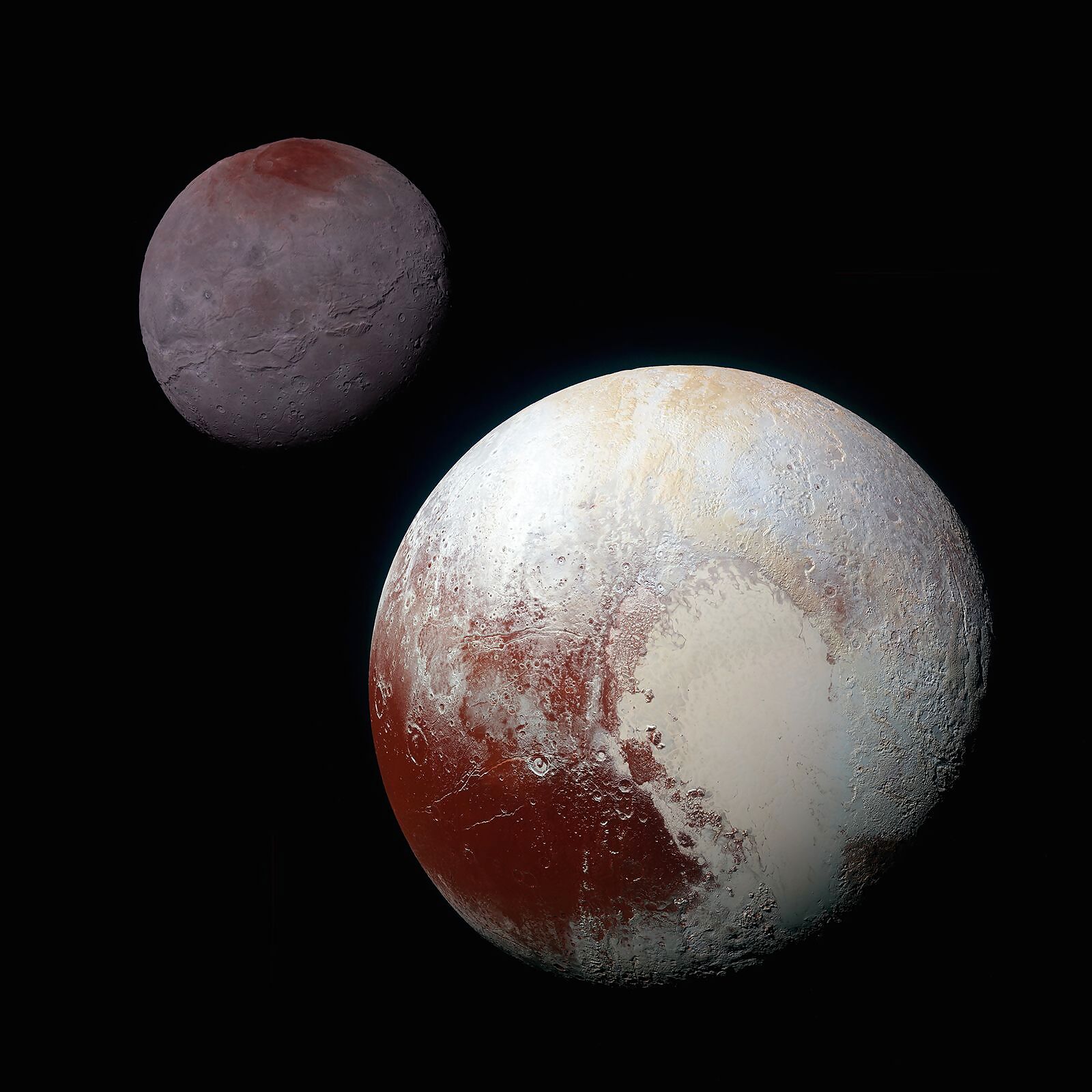
views
Pluto has 153 hours a day. One year on Earth is equivalent to 248 years on Pluto. The furthest celestial body in the solar system, it has a diameter of 1,473 miles (2,370 km), less than one-fifth the diameter of Earth, and only about two-thirds as wide as Earth’s moon. Pluto’s orbit around the Sun is unusual compared to the planets: it’s both elliptical and tilted. One of the coldest celestial bodies, it has been placed in the category of ‘dwarf planet’ in 2006, which created a stir on social media.
Jim Green, Director, NASA Planetary Science Division said, “Pluto was so unlike anything I could imagine based on my knowledge of the solar system. It showed me how much about the outer solar system we didn’t know. Truly shocking, exciting and wonderful all at the same time."
Let’s trace its journey from a planet to its demotion to a dwarf planet.
Discovery of Pluto
American astronomer Percival Lowell first observed strange deviations in the orbits of Neptune and Uranus. He suggested that Pluto existed in 1905. He thought there must be another whose gravity is tugging on Neptune and Uranus, causing discrepancies in their orbits. Lowell predicted the mystery planet’s location in 1915. However, 15 years after his death, Pluto was eventually discovered in 1930 by Clyde Tombaugh at the Lowell Observatory, based on predictions by Lowell and other astronomers. On February 18, 1930, Pluto was discovered at the Lowell Observatory by astronomer Clyde W Tombaugh, along with William H Pickering.
Naming Pluto and its Moons
First termed as ‘Planet X’, Pluto got its name from 11-year-old schoolgirl Venetia Burney of Oxford, England. She suggested the name to her grandfather, Falconer Madan, a former librarian at the University of Oxford’s Bodleian Library, who forwarded the suggestion to astronomer Herbert Hall Turner, who cabled his American colleagues at Lowell Observatory. Clyde Tombaugh liked the proposal because it started with the initials of Percival Lowell who had predicted the existence of Planet X.
On May 1, 1930, the name Pluto was formally adopted for the new celestial body. The new planet got its name from the Roman god of the underworld which seemed appropriate for such a presumably dark and cold world. Venetia received five pounds as a reward.
Pluto has five moons which too have been named after other mythological figures associated with the Roman God of the underworld. Pluto has five moons: Charon, Styx, Nix, Kerberos, and Hydra, with Charon being the closest to Pluto and Hydra the most distant. Charon’s orbit around Pluto takes 153 hours – the same time it takes Pluto to complete one rotation. Scientists often refer to Pluto and Charon as a double dwarf planet, double planet, or binary system.
In 2005, scientists photographed Pluto with the Hubble Space Telescope in preparation for the New Horizons mission and discovered two other tiny moons of Pluto, now dubbed Nix and Hydra. Scientists using Hubble discovered a fourth moon, Kerberos, in 2011.
Its biggest moon, Charon, which is half of Pluto’s size is named Charon after the river Styx boatman who ferries souls in the underworld, Nix is named for the mother of Charon, who is also the goddess of darkness and night, Hydra is named for the nine-headed serpent that guards the underworld, Kerberos is named after the three-headed dog of Greek mythology, and Styx is named after the mythological river that separates the world of the living from the realm of the dead, revealed NASA’s official website.

The ‘Icy’ Pluto
As per NASA’s New Horizons spacecraft, Pluto has a variety of surface features, including mountains as high as 6,500 to 9,800 feet, methane ice, and nitrogen ice which cover much of the surface of the dwarf planet.
Craters as large as 260 kilometers in diameter have been spotted on some of the landscape on Pluto, with some showing signs of erosion. Pluto’s surface also consists of a large heart-shaped region known as Tombaugh Regio (after Clyde Tombaugh). The left side of the region is covered in carbon monoxide ice. In the center-left of Tombaugh Regio is a very smooth region unofficially known by the New Horizons team as “Sputnik Planum," after Earth’s first artificial satellite, Sputnik. NASA’s Hubble Space Telescope has also revealed evidence that Pluto’s crust could contain complex organic molecules.

“It isn’t known whether Pluto has a magnetic field, but its small size and slow rotation suggest little or none," said NASA. Temperatures in Pluto here can drop to around minus 375 to minus 400 degrees Fahrenheit (minus 226 to minus 240 degrees Celsius). Compared to past images, pictures of Pluto taken by the Hubble Space Telescope revealed that the dwarf planet has apparently grown redder over time, likely due to seasonal changes.
Traveling from Earth to Pluto
NASA’s New Horizons mission was the first probe to study Pluto, its moons and other worlds within the Kuiper Belt. Launched on January 2006, it successfully made its closest approach to Pluto on July 14, 2015. The New Horizons probe carried some of the ashes of Pluto’s discoverer, Clyde Tombaugh.
Prior to the mission’s launch, scientists knew of the existence of only three moons around Pluto. The discovery of Kerberos and Styx during the spacecraft’s journey fueled the idea that there could be more satellites on the orbit of the dwarf planet, not visible from Earth. In October 2021, New Horizons made history when it returned the first close-up images of Pluto and it’s moons.
Tiny Pluto
The status of Pluto was changed from being a planet to that of ‘dwarf planet’ in August 2006 by the International Astronomical Union (IAU). Earlier, it used to be considered the ninth and most distant planet from the sun.
As per IAU, a dwarf planet is a celestial body that has enough mass to assume a nearly round shape, is in orbit around the Sun, but has not cleared the neighborhood around its orbit and is not a moon. This means that the planet has become gravitationally dominant, there are no other bodies of comparable size other than its own satellites or others falling under its gravitational influence.
“It’s clear to me that the solar system saved the best for last!" said Alan Stern, New Horizons principal investigator from the Southwest Research Institute, Boulder, Colorado. “We could not have explored a more fascinating or scientifically important planet at the edge of our solar system. The New Horizons team worked for 15 years to plan and execute this flyby and Pluto paid us back in spades!"
To learn about other topics taught in school, explained by News18, here is a list of other Classes With News18: Queries Related to Chapters on Elections | Sex Versus Gender | Cryptocurrencies | Economy & Banks | How to Become President of India | Post Independence Struggle | How India Adopted Its Flag | Formation of States & United India | Tipu Sultan | Indian Teachers Day Different from Rest of the World |Queen Elizabeth & Colonialism |
Read all the Latest Education News and Breaking News here




















Comments
0 comment